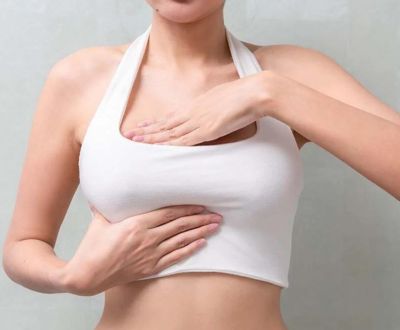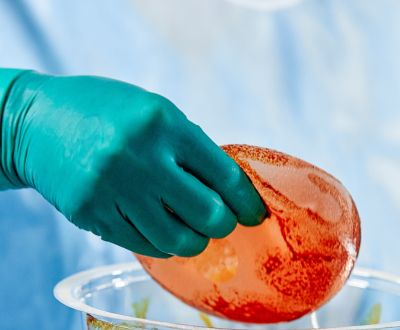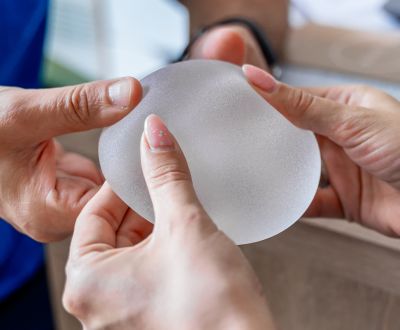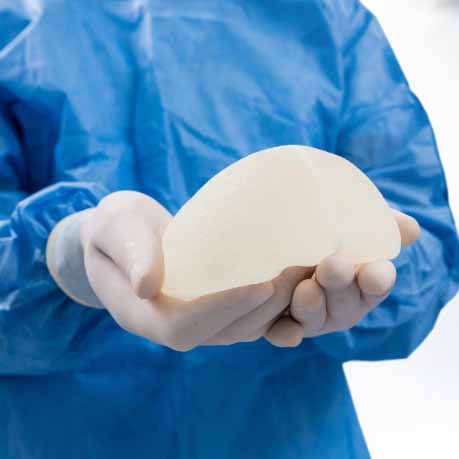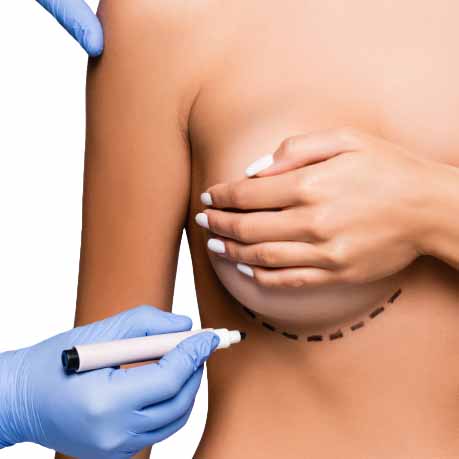Risks and Complications
Risks and Complications – Breast Augmentation
As much as you may be intrigued and excited about the notion of breast augmentation, you must not forget the potential risks and complications. Surgery and general anesthesia always carry some risk to your general health. Although rare, there even exists the possibility of death. Additionally, complications occasionally arise at the actual site of breast augmentation. A partial list of complications includes asymmetry, deformation, infection, bleeding, delayed healing, reoperation, implant visibility, implant palpability, pain, loss of sensation, scars, capsular contracture, implant rupture, implant malposition, and no guarantee to the final size.
The possible complications…
- Hematoma, seroma, infection
- hematoma: bleeding in the breast pocket can result in an accumulation of blood around the breast implant. Should this complication arise, it usually is apparent in the early hours after surgery. Often a return to the operating room is necessary to evacuate the hematoma.
- seroma: an accumulation of clear straw-colored lymphatic fluid around the implant is called a seroma. It is a frequent complication and is often associated with considerable swelling. It gives rise to a temporary increase in the volume of a single breast or both breasts. This complication usually resolves spontaneously by gradual dissipation.
- infection: rare after breast augmentation. If the infection does not rapidly resolve with antibiotics, then surgical drainage and implant removal may be necessary. A new breast implant may be reinserted at a later date when the infection has fully resolved. It is advisable to have a 3-6 month infection-free interval before planning the subsequent implant replacement.
- Three other specific forms of infection deserve comment:
- low-grade subclinical infection: this has few symptoms and can occur several years after implantation. This is significant as it is believed to be a possible process that gives rise to capsular contracture.
- micro abscess:
occurs with a moderate degree of frequency. This presents as a 1-2 mm abscess surrounding a retained skin suture. Removal of the offending suture will immediately remedy this problem. - Toxic shock syndrome: rare cases of this condition have been reported. It is caused by a rare toxin-secreting bacteria and is mentioned because of its severe morbidity.
- Skin necrosis:
- occurs when the overlying skin has an insufficient blood supply. This may result from skin excessive tension associated with a large untreated hematoma, an infection, or decreased blood flow to the skin from the nicotine in cigarette smoke. It is a rare but serious complication. The underlying breast implant is at risk of exposure and extrusion. Revision surgery with breast implant removal may be necessary.
- Abnormal scar:
- the process of scarring and healing is not entirely predictable. Following breast augmentation, incisional scars may become wide, abnormally pigmented (pale or dark), hypertrophic, or rarely keloid.
- Sensory changes:
- this usually is temporary, lasting several months, and diminishes spontaneously. Infrequently, residual sensory alterations persist (heightened or diminished sensitivity) around the areola and nipple.
- Thrombosed veins:
- this condition occasionally presents several weeks after breast augmentation. One (or more) vertically oriented 2cm to 5cm length(s) of vein below the breast may become thrombosed, tender, and may resemble a cord. It is also known as Mondor’s Cord Disease. No medical or surgical treatment is necessary as the condition heals on its own and causes no permanent damage.
- Galactorrhea/milk secretion :
- rare cases of unexplained postoperative hormonal stimulation and milk stimulation have been reported. The secreted milk may accumulate around the implant.
- Pneumothorax:
- very rare, has a specific treatment.
- Specific implant-related risks:
- wrinkling or rippling: breast implants are designed to be soft and flexible. Implant malleability permits undesirable creases and folds to form on the external implant envelope. In turn, these creases can form unnatural wrinkles and ripples that are visible on the surface of the breast.
- Rupture: synthetic prostheses designed for biological implantation all suffer the risk of failure. When a breast implant fails, its contents are spilled into the breast pocket. Rupture of saline implants results in resorption of the physiologic salt solution and loss of breast volume. In contrast, silicone gel cannot be absorbed by the human body. The gel of a ruptured implant will often remain in the soft confines of the breast pocket. Consequently, rupture of silicone gel-filled implants frequently go unnoticed and is coincidentally diagnosed during routine breast studies (i.e. mammography). Dr. Chen Lee recommends prompt exchange of implants once the diagnosis of rupture had been made.
- Capsular Contracture: can follow infection or hematoma, but more often has no identifiable cause. Modern surgical techniques with meticulous attention to anti-bacterial detail have lowered the incidence and severity of capsular contracture following breast augmentation. Treatment of capsular contracture usually requires revisional surgery with possible implant exchange.
- Malposition:
- improper positioning or secondary displacement of a breast implant is the prime cause of malposition, Correction usually necessitates reoperation.
- Rotation:
- rarely occurs. Rotation of an anatomically shaped implant is theoretically possible and may affect the aesthetic result.
- Deformation of the chest wall:
- arises from the imprint left in the chest wall by a hardened implant capsule severely affected by capsular contracture. Following the removal of the offending hardened implant capsule, a residual chest wall deformity remains.
The risks associated with cosmetic breast augmentation are low and should not be overstated. Even seemingly simple surgeries have risks. During your consultation, Dr. Chen Lee will further elaborate on the risks and complications associated with breast augmentation.
Next Steps…
To learn more about a procedure or book a consultation


